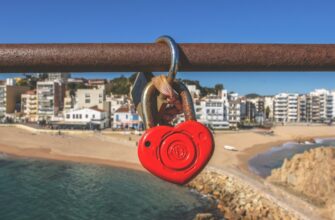What is Cold Storage and Why is it Crucial?
Cold storage refers to keeping cryptocurrency private keys completely offline, isolated from internet-connected devices. Unlike “hot wallets” (software wallets on phones or computers), cold storage ensures hackers can’t remotely access your keys. With over $3.8 billion in crypto stolen in 2022 alone (Chainalysis report), protecting private keys in cold storage isn’t optional—it’s essential for long-term asset security. This method creates an “air gap” barrier, making your keys virtually immune to online threats like malware or phishing attacks.
Step-by-Step Tutorial: Protecting Your Private Key with Cold Storage
Follow this foolproof 6-step process to secure your private keys offline:
- Choose Your Cold Storage Medium: Select hardware wallets (Ledger, Trezor) or analog options like metal plates. Avoid paper—it degrades and burns easily.
- Generate Keys Offline: On a clean, never-online computer, use open-source software (e.g., Electrum) to create keys. Disconnect Wi-Fi/ethernet first.
- Transfer Keys Securely: Manually write or engrave keys onto your chosen medium. Never copy-paste or screenshot.
- Triple-Verify Accuracy: Check each character twice during transcription. One typo = permanent asset loss.
- Implement Physical Security: Store mediums in fireproof safes or safety deposit boxes. Use tamper-evident bags.
- Create Backup Copies: Make 2-3 identical copies stored in geographically separate locations (e.g., home + bank vault).
Best Practices for Cold Storage Security
- Multi-Signature Setup: Require 2-3 private keys to authorize transactions, adding redundancy.
- Regular Integrity Checks: Inspect storage mediums annually for corrosion or damage.
- Zero Digital Traces: Wipe all temporary files from the offline computer using tools like DBAN post-setup.
- Decoy Wallets: Store small amounts in a separate “hot” wallet to mislead attackers.
- Silent Operation: Never discuss storage details online or in public spaces.
Common Mistakes to Avoid
- Using printers or cameras that cache data
- Storing backups in predictable locations (desk drawers, bedside tables)
- Ignoring environmental risks (humidity, magnets, extreme temperatures)
- Reusing addresses after exposing public keys
- Delaying backup creation—do it immediately after key generation
Frequently Asked Questions (FAQs)
Q: How often should I check my cold storage?
A: Physically inspect backups every 6-12 months. Never connect storage devices to computers unless absolutely necessary.
Q: Can I store multiple private keys together?
A: Never. Use separate locations for each key to avoid single-point failure. Apply the “3-2-1 rule”: 3 copies, 2 media types (e.g., metal + stone), 1 off-site.
Q: What destroys metal cold storage plates?
A: Saltwater corrosion, acids, or temperatures above 1,200°F. Use stainless steel or titanium with protective coatings.
Q: Is a bank safety deposit box safe?
A> Partially—but combine with your own safe. Banks aren’t liable for crypto losses, and access isn’t 24/7.
Q: How do I recover if I lose my cold storage?
A> That’s why backups are critical. If all copies are lost/gone, recovery is impossible. Test recovery with trivial amounts before storing major assets.








